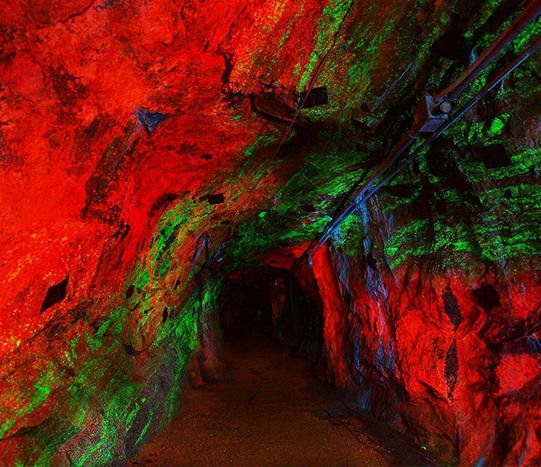
The Sterling Hill Mining Museum in Ogdensburg, New Jersey, is a must-visit for anyone interested in fluorescent minerals. It is located near the town of Franklin, which was named “The Fluorescent Mineral Capital of the World” in 1968 and is considered the ultimate locality for fluorescent minerals.
The Sterling Hill Mine
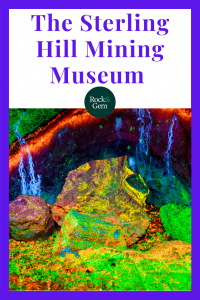
The Sterling Hill Mine was once an internationally renowned zinc mine with one of the world’s richest zinc ore deposits. Over the 136-year period, the Sterling Mine was in operation, it mined 11 million tons of ore, twenty percent of which was zinc.
The zinc from this area was unparalleled in its richness and purity. Zinc is essential in many industries including cars (carburetors, door handles, and fuel pumps, all die-cast parts made of zinc, and tires), ceramics and footwear.
What to Expect at the Sterling Hill Mining Museum
Overall, the Sterling Hill Mine has 35 miles of tunnels with limited public access. Visitors can get a glimpse into the mine and view the historic mining machinery and equipment. There is a demonstration of drilling and blasting. The “Rainbow Room” is a photographer’s delight where visitors can see fluorescent minerals in the underground mine walls.
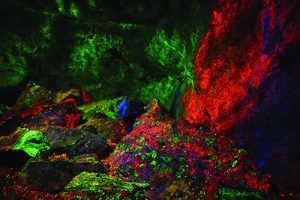
The Sterling Hill Mine became a museum run by brothers Richard and Robert Hauck after it ceased operations in 1986 because of adverse market conditions. The Sterling Hill Mine is the fourth oldest mine in the United States, and New Jersey’s only underground mine tour, with a quarter-mile of tunnels to explore.
The museum is open seven days a week and welcomes between 55,000 and 60,000 visitors per year. It is an essential pilgrimage for curious individuals and rock and mineral enthusiasts of all ages.
Franklin New Jersey’s Fluorescent Finds
There are over 370 minerals in the zinc mines in Franklin, New Jersey, 90 of which fluoresce. It is most well-known for its combinations of intense red calcite (calcium carbonate), deep yellow esperite (calcium lead zinc silicate), profound violet-blue hardystonite (calcium zinc silicate) and brilliant green willemite (zinc silicate), which is phosphorescent and continues to emit light after the energy source has been removed.
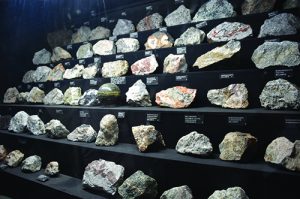
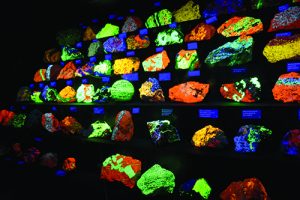
There are elements, such as nickel, iron and cobalt that quench fluorescence. Franklinite, a member of the spinel group, is made of zinc, manganese and approximately one-third iron and shows no fluorescence. However, it is often found alongside calcite, willemite and zincite. These minerals are all found together thanks to billions of years of geological events.
As William Kroth, current president and executive director of the Sterling Hill Mine explained, it all began in the Pre-Cambrian era (geologic time prior to 600 million years ago), with sediments of metal-rich fluids that were deposited in a shallow seafloor with white calcium carbonate mud that became limestone. Around 1.25 to 1.3 million years ago, the sediments were buried, heated and distorted, which caused chemical reactions and metamorphism.
Geological Activity
At 1400 degrees Fahrenheit and a depth of 10 to 12 miles, the pure limestone then morphed into Franklin Marble, a textural recrystallization of calcite into large, interlocking calcite grains. Intruded by igneous dikes, penetrated by hydrothermal waters and exposed to weathering, the ore oxidized and uplifted.
Millions of years of glaciation eroded the soft marble and bared ore minerals, and this alteration of chemistry resulted in the creation of new minerals.
This story about pyrite previously appeared in Rock & Gem magazine. Click here to subscribe. Story by Christa Lynn Van Eerde.















